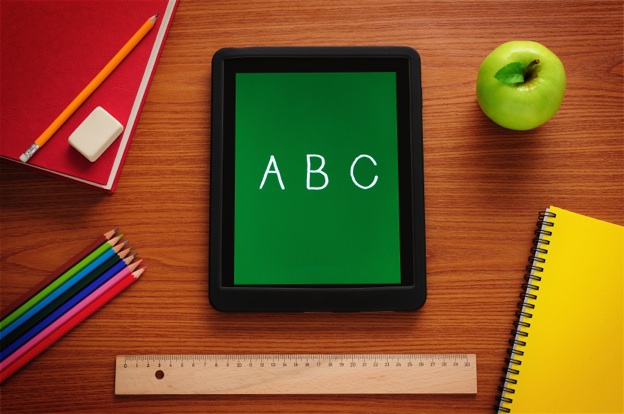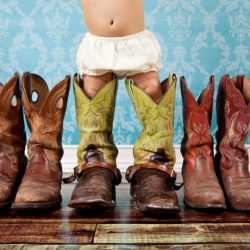SingaporeMotherhood | Preschooler & Up
June 2012
Primary School Acronyms

You know where you’ll be registering your child for Primary School. That’s the easy part done. Now do your homework. Yes, yours, as you will be hearing these letters very often once your child enters Primary One. It’s become such a way of life, especially here in Singapore, to abbreviate long titles into acronyms and initials. So much so that we often find ourselves baffled by the seemingly nonsensical strings of letters our children rattle off when they return from school.
While most parents know by now that CCA stands for Co-Curricular Activities, which encompass sports, societies, clubs, visual and performing arts, as well as uniformed groups, many of the others aren’t as simple to grasp.
(See also: Choosing a CCA for your Primary School Child)
To get them all straight, we decided to ask the Ministry of Education (MOE) for a guide to 10 of the commonly used yet trickier terms that parents of Primary School pupils should know. Read on and learn.
PERI
What it stands for: Primary Education Review and Implementation
What it means: PERI was set up in 2008 to look at ways to raise the quality of Primary education, resulting in a range of enhancements being implemented across all schools progressively. They aim to make learning more engaging and enjoyable, and seek to develop a better balance of skills, knowledge and values. These enhancements include more engaging teaching methods, Programme for Active Learning, Holistic Assessment, and better school infrastructure. For more information, please refer here.
How to use it: “The PERI Committee implemented many fine initiatives.”
(See also: A Roadmap to Singapore’s Primary School Education)
PAL
What it stands for: Programme for Active Learning
What it means: To encourage learning beyond the classroom, PAL aims to give Primary 1 and 2 pupils the chance to discover new interests, learn new skills and build character. Pupils have the opportunity during curriculum time to try out activities in the areas of sports and outdoor education, as well as performing and visual arts. PAL is being introduced progressively and by 2017, will be implemented in all primary schools.
How to use it: “My child made a puppet in PAL class.”
FTGP
What it stands for: Form Teacher Guidance Period
What it means: PERI recognised that Form Teachers play a critical role. Hence from 2012, one period per week is set aside for FTGP, allowing for more quality teacher-pupil interaction, letting teachers better cater to each pupil’s holistic development through meaningful activities. Through FTGP, pupils are equipped with social and emotional competencies that will enable them to manage themselves and interact more effectively with others.
How to use it: “My child showed me his FTGP Journal today.”
STELLAR
What it stands for: Strategies for English Language Learning and Reading
What it means: The STELLAR programme aims to strengthen language and reading skills, as well as promote a positive attitude towards reading in a child’s foundational years. Children learn through shared reading and shared experiences, with grammar, vocabulary and phonological awareness taught explicitly and reinforced by specially designed learning tasks. For more information, please refer here.
How to use it: “My child says STELLAR classes are a lot of fun.”
SEL
What it stands for: Social Emotional Learning
What it means: Our children need to acquire skills, knowledge and dispositions that will help them face future challenges. Through SEL, children learn to manage themselves and interact with others meaningfully. They learn to develop care and concern for others, make responsible decisions, build positive relationships and handle challenging situations effectively. This is facilitated through explicit teaching of these competencies and incorporating them into the curriculum and co-curricular activities.
How to use it: “SEL is about teaching our kids life skills.”
MTL
What it stands for: Mother Tongue Languages
What it means: Pupils learn their MTL (Chinese, Malay or Tamil) as a second language. Bilingualism has been a valuable asset to our pupils, enabling them to connect and tap into opportunities in the global environment. Schools use differentiated teaching approaches to cater to pupils from different home language backgrounds. Schools promote functional use of the MTLs, with greater emphasis on listening and speaking skills.
How to use it: “My child can communicate with his grandparents better now, thanks to MTL.”
LSP and LSM
What they stand for: Learning Support Programme (LSP) and Learning Support for Mathematics (LSM)
What they mean: LSP and LSM provide learning support for pupils who enter Primary 1 with either weak literacy or numeracy skills and enable them to keep up with English and Mathematics, which are core subjects. Both LSP and LSM include daily lessons with smaller groups of pupils taught by specially trained teachers. These programmes use structured teaching approaches that meet the learning needs of pupils.
How to use them: “As my child is dyslexic, she has to attend LSP class.” “With LSP and LSM, my child is showing improvement in his English and Mathematics.”
GEP
What it stands for: Gifted Education Programme
What it means: Intellectually gifted pupils are placed in separate classes taught by specially trained teachers in selected primary schools for Primary 4 to Primary 6 and receive an advanced curriculum that matches their abilities. Pupils sit for a screening test in Primary 3 to determine their eligibility. Non-GEP pupils with high abilities in specific subjects may also enrich their learning through both school-based and MOE centrally-run activities.
How to use it: “I wonder if GEP will be stressful for my child.”
(See also: “There is no norm to follow” says this mum about the GEP (Gifted Education Programme)
CCE
What it stands for: Character and Citizenship Education
What it means: CCE refers to all learning experiences planned for the purpose of imbuing in pupils the knowledge, core values, and social and emotional competencies for nurturing character and cultivating responsible citizens. These include Civics and Moral Education lessons, Education and Career Guidance, Sexuality Education and Cyber Wellness modules, National Education Commemorative Days, CCAs and the Community Involvement Programme.
How to use it: “My child learns to take pride in being a Singaporean through CCE.”
FAS
What it stands for: Financial Assistance Schemes
What it means: The MOE FAS ensures that no Singaporean child is denied an education because of his/her financial situation. Needy pupils receive free textbooks, school attire and waiver of school fees and standard miscellaneous fees. Schools may also provide additional assistance (e.g. transport allowance and meal coupons) using school-based funds at their discretion. For more information, please refer here.
How to use it: “Does my child qualify for FAS?”
All content from this article, including images, cannot be reproduced without credits or written permission from SingaporeMotherhood.
Follow us on Facebook, Instagram, and Telegram for the latest article and promotion updates.






